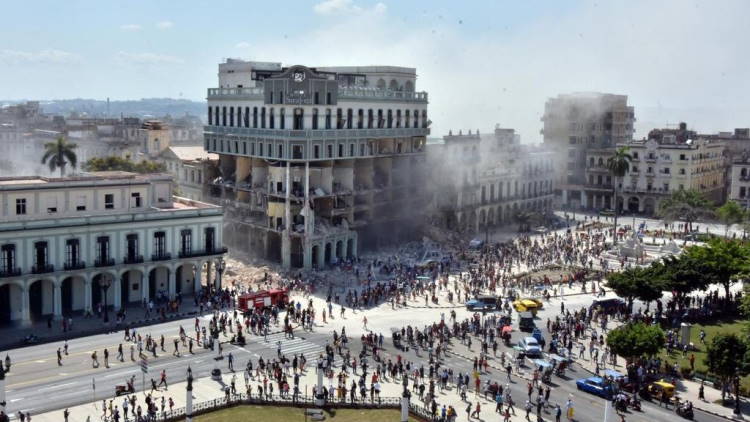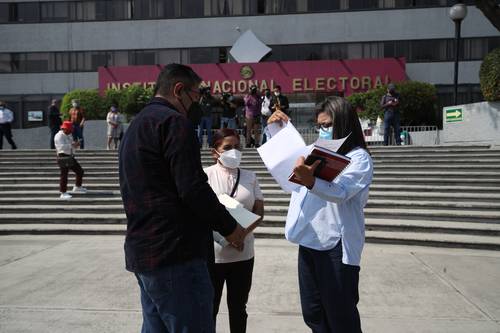Havana Cuba. — About noon yesterday, in the streets surrounding the Saratoga hotel everything was chaos. Firefighters and rescue brigades worked around the clock on the scene, while the police drew up a wide security perimeter to allow ambulances and other vehicles to circulate freely, and also to minimize damage from a possible second explosion. Hundreds of onlookers crowded the arcades of Monte Street, heedless of the potential danger, shaken by the images of a tragedy that reminded them of the stories of the attacks perpetrated in the 1990s on Havana hotels.
Yet the official press he had repeatedly stated that what happened was the product of an unfortunate accident; but the people evoked the ghost of the enemy, the possibility of the bomb, of terrorism, of war. Apart from the lurid details of the incident, speculation abounded around that enormous gas bullet that miraculously did not explode, and that at this hour has half of Cuba doubting the official version of the events.
“We will never know what really happened, but that story is very poorly told,” alleged a man in the vicinity of Monte y Cárdenas, where a group of neighbors commented on the terrible event around the small Transtur bus (4233) that had crushed by debris. Some tried to give more or less scientific explanations as to why the gas bullet had not exploded, but given the magnitude of the disaster, the same unknown emerged: and where did the candle come from?
Accustomed to living between negligence and chance, Cubans notice little or nothing in the danger that stalks them daily. In the central municipalities of the capital there are intersections —such as Zanja and Belascoaín— where a strong smell of gas is perceived. If a misfortune of biblical proportions has not occurred, it is because the threat is out in the open; but the same thing happens in multi-family buildings, where gas and drinking water leaks are daily evils.
In the municipalities that are supplied with liquefied gas, it is common to see people transferring the contents of one balita to another without taking any precautions, despite repeated warnings about the danger of this operation. Cubans live unaware of this kind of risk, because “nothing ever happens.” Until one day.
Negligence is already part of the national DNA; Perhaps that is why people find the explanation for the accident too banal and have dedicated themselves to speculating about terrorism and “destabilizing actions”. Nothing else could be expected from a town that for six decades has been required to live in permanent combativeness and for which everything is a battle, from fulfilling a production plan to buying the chicken that is due.
There is nothing strange in the collective paranoia that makes its way in the streets and on social networks. What was very suspicious yesterday, in the midst of so many disconsolate and tormented people, was the presence of certain individuals who insisted on relating what happened in the Saratoga with the change that so many Cubans yearn for.
In the arcade on Bernaza street, on the corner of Muralla, where some of the victims who lived in the building on Prado street, next to the hotel, were gathered, a woman repeated tirelessly that if change came with explosions like that, she preferred to continue starving. It is obvious that she was very affected by the accident, or she was an opinion broker who was entangled in her own pointless harangue.
Like her, in other parts of the area, various subjects insinuated that the explosion should serve as a warning of what could happen if the town continued to insist on changing this. Politicized speculation paid tribute at all times to the permanence of the regime, and at the same time increased the paranoia that the accident was not such.
Too soon, some consider, the Castro youtuber known as Guerrero Cubano planted the hypothesis that the incident had allegedly been caused by the transfer of liquefied gas. Fifteen minutes after the explosion, this narrative was spreading on social networks, which led to the suspicion that the regime was trying to cover something up.
Some conspiracy theories suggest that the authorities were quick to rule out the possibility of the attack because news of this magnitude would be disastrous for the tourism sector, which has not yet taken off. Just when trying to relaunch Cuba as a destination for foreign visitors, in a highly competitive scenario, to speak of sabotage would be suicide. Others believe that, if it had been an attack, the regime would have rushed to practice its favorite sport with relish: blaming the United States government, or the Miami “mafia”.
It all boils down to what would be more profitable at this time for the leadership: recognize the alleged sabotage and victimize itself as it has always done, or maintain the version of the accident – probably the true one – so that there is no panic. After all, when it comes to Cuban lives, responsibility is very easy to evade.
Accident or not, what happened adds an indescribable burden of pain for a town that has done nothing but suffer in the last three years. There will be those who will rush to correct me and clarify that the suffering began in January 1959, which is true. But it cannot be denied that since “the situation” was announced in September 2019, Cubans have experienced a deep and unique kind of misery, different from that experienced in previous crises.
OPINION ARTICLE
The opinions expressed in this article are the sole responsibility of the issuer and do not necessarily represent the opinion of CubaNet.
Receive information from CubaNet on your cell phone through WhatsApp. Send us a message with the word “CUBA” on the phone +1 (786) 316-2072, You can also subscribe to our electronic newsletter by giving click here.






